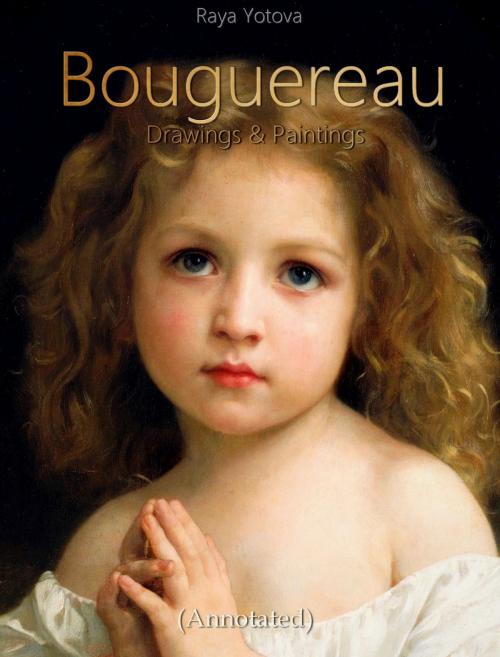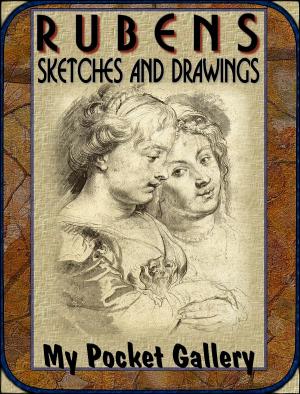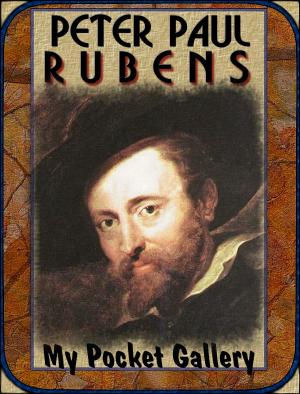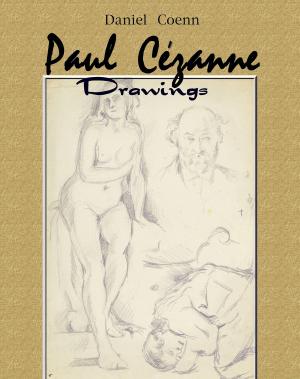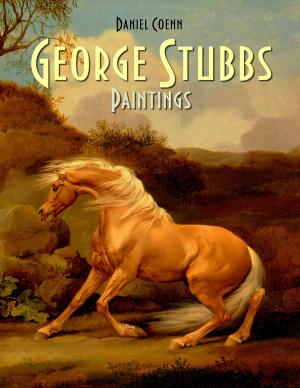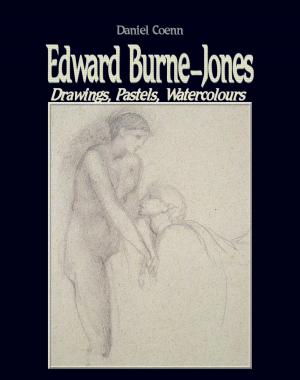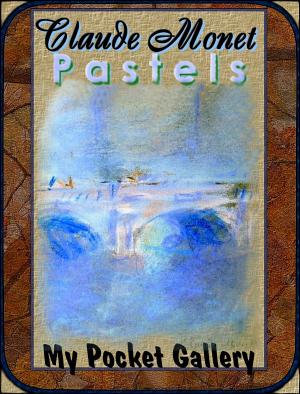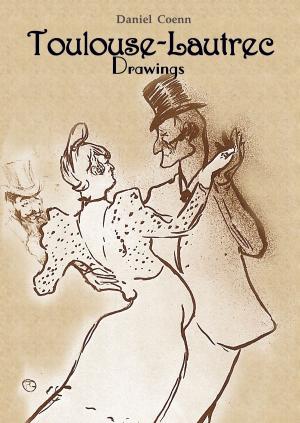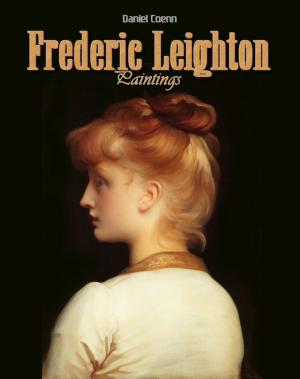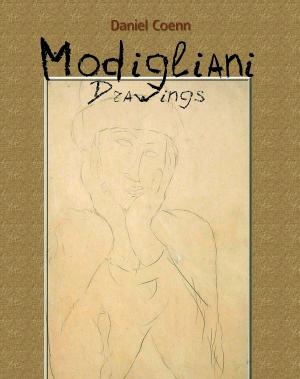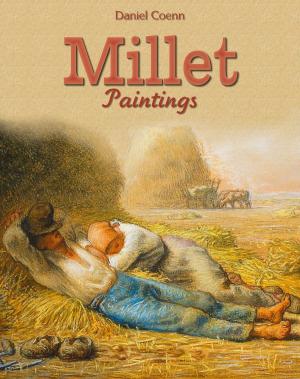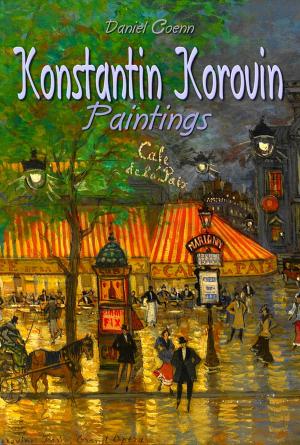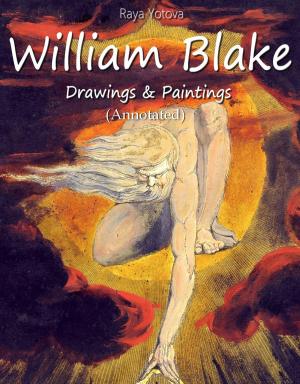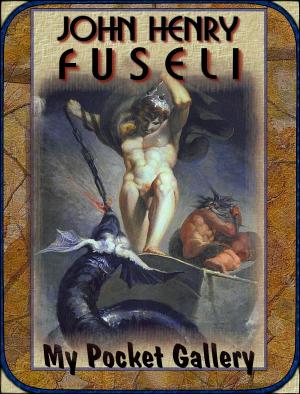Bouguereau Drawings & Paintings (Annotated)
Biography & Memoir, Artists, Architects & Photographers, Nonfiction, Art & Architecture| Author: | Raya Yotova | ISBN: | 1230002704142 |
| Publisher: | Classic & Annotated | Publication: | October 18, 2018 |
| Imprint: | Language: | English |
| Author: | Raya Yotova |
| ISBN: | 1230002704142 |
| Publisher: | Classic & Annotated |
| Publication: | October 18, 2018 |
| Imprint: | |
| Language: | English |
Concise, essential and annotated by Raya Yotova, this Art Book contains annotated reproductions of William-Adolphe Bouguereau paintings and drawings, date and interesting facts page below.
William-Adolphe Bouguereau (1825 – 1905) was a French academic painter. In his realistic genre paintings he used mythological themes, making modern interpretations of classical subjects, with an emphasis on the female human body. During his life he enjoyed significant popularity in France and the United States, was given numerous official honors, and received top prices for his work. As the quintessential salon painter of his generation, he was reviled by the Impressionist avant-garde. By the early twentieth century, Bouguereau and his art fell out of favor with the public, due in part to changing tastes. In the 1980s, a revival of interest in figure painting led to a rediscovery of Bouguereau and his work. Throughout the course of his life, Bouguereau executed 822 known finished paintings, although the whereabouts of many are still unknown.
Bouguereau was a staunch traditionalist whose genre paintings and mythological themes were modern interpretations of Classical subjects, both pagan and Christian, with a concentration on the naked female form. The idealized world of his paintings brought to life goddesses, nymphs, bathers, shepherdesses, and madonnas in a way that appealed to wealthy art patrons of the era.
Bouguereau employed traditional methods of working up a painting, including detailed pencil studies and oil sketches, and his careful method resulted in a pleasing and accurate rendering of the human form. His painting of skin, hands, and feet was particularly admired. He also used some of the religious and erotic symbolism of the Old Masters, such as the "broken pitcher" which connoted lost innocence.
Bouguereau received many commissions to decorate private houses and public buildings, and, early on, this added to his prestige and fame. As was typical of such commissions, Bouguereau would sometimes paint in his own style, and at other times conform to an existing group style. He also made reductions of his public paintings for sale to patrons, of which The Annunciation (1888) is an example. He was also a successful portrait painter and many of his paintings of wealthy patrons remain in private hands.
Bouguereau received many honors from the Academy: he became a Life Member in 1876; received the Grand Medal of Honour in 1885; was appointed Commander of the Legion of Honor in 1885; and was made Grand Officier of the Legion of Honour in 1905. He began to teach drawing at the Academie Julian in 1875, a co-ed art institution independent of the Ecole des Beaux-Arts, with no entrance exams and nominal fees.
Near the end of his life he described his love of his art: "Each day I go to my studio full of joy; in the evening when obliged to stop because of darkness I can scarcely wait for the next morning to come ... if I cannot give myself to my dear painting I am miserable."
Concise, essential and annotated by Raya Yotova, this Art Book contains annotated reproductions of William-Adolphe Bouguereau paintings and drawings, date and interesting facts page below.
William-Adolphe Bouguereau (1825 – 1905) was a French academic painter. In his realistic genre paintings he used mythological themes, making modern interpretations of classical subjects, with an emphasis on the female human body. During his life he enjoyed significant popularity in France and the United States, was given numerous official honors, and received top prices for his work. As the quintessential salon painter of his generation, he was reviled by the Impressionist avant-garde. By the early twentieth century, Bouguereau and his art fell out of favor with the public, due in part to changing tastes. In the 1980s, a revival of interest in figure painting led to a rediscovery of Bouguereau and his work. Throughout the course of his life, Bouguereau executed 822 known finished paintings, although the whereabouts of many are still unknown.
Bouguereau was a staunch traditionalist whose genre paintings and mythological themes were modern interpretations of Classical subjects, both pagan and Christian, with a concentration on the naked female form. The idealized world of his paintings brought to life goddesses, nymphs, bathers, shepherdesses, and madonnas in a way that appealed to wealthy art patrons of the era.
Bouguereau employed traditional methods of working up a painting, including detailed pencil studies and oil sketches, and his careful method resulted in a pleasing and accurate rendering of the human form. His painting of skin, hands, and feet was particularly admired. He also used some of the religious and erotic symbolism of the Old Masters, such as the "broken pitcher" which connoted lost innocence.
Bouguereau received many commissions to decorate private houses and public buildings, and, early on, this added to his prestige and fame. As was typical of such commissions, Bouguereau would sometimes paint in his own style, and at other times conform to an existing group style. He also made reductions of his public paintings for sale to patrons, of which The Annunciation (1888) is an example. He was also a successful portrait painter and many of his paintings of wealthy patrons remain in private hands.
Bouguereau received many honors from the Academy: he became a Life Member in 1876; received the Grand Medal of Honour in 1885; was appointed Commander of the Legion of Honor in 1885; and was made Grand Officier of the Legion of Honour in 1905. He began to teach drawing at the Academie Julian in 1875, a co-ed art institution independent of the Ecole des Beaux-Arts, with no entrance exams and nominal fees.
Near the end of his life he described his love of his art: "Each day I go to my studio full of joy; in the evening when obliged to stop because of darkness I can scarcely wait for the next morning to come ... if I cannot give myself to my dear painting I am miserable."
